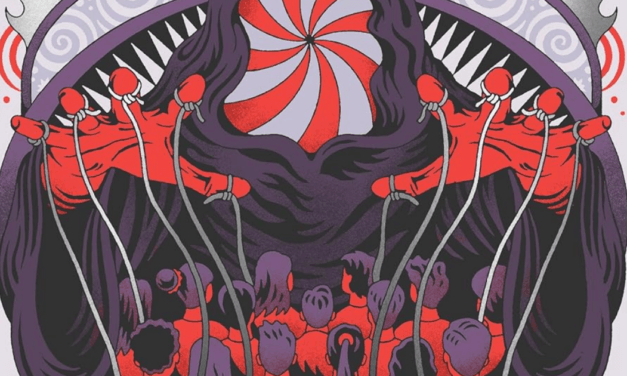This article first appeared in the Christian Research Journal, volume 21, number 2 (1998) as a companion to the feature article The Bondage Maker: Examining the Message and Method of Neil T. Anderson, Part Two: Spiritual Warfare And The “Truth Encounter,” by Elliot Miller. For further information about to the Christian Research Journal, click here.
The classic texts on spiritual warfare – Ephesians 6:10-20; James 3:14-4:12; 1 Peter 5:6-11 – teach a mode of fighting the devil’s bid for lordship that centers on the Word of the living God, faith, repentance, prayer, and obedience in the power of the Spirit. There is no hint of exorcistic methods in these passages, because the Bible does not view the problem of sin, especially in Christians, as linked to an indwelling demon who must be evicted.
Although the practice of exorcism has enjoyed popularity at various times and places in church history, the use of exorcism as a means of accomplishing sanctification — or creating conditions for successful evangelism — is a recent innovation. Where did this “demon deliverance” approach to ministry and the Christian life come from? Who teaches it? This view of spiritual warfare has been developing only since the late 1960s. There are at least four varieties of demon deliverance ministry within the species. They share fundamental common features, though they diverge in various particulars of both teaching and method. All believe that spiritual warfare grapples with the danger of demonic residents taking over — like computer viruses on the hard disk of the soul — and thus holding people in bondage to patterns of sin. The labels used here are only intended as rough markers. Authors frequently cite one another across the spectrum, usually favorably. While there is intramural skirmishing on secondary matters, they are close enough in their distinctive emphases to be considered variations of one movement.
Early charismatics were the first popular exponents of this new view of spiritual warfare (many subsequent charismatics have repudiated it). Pastor Don Basham’s best-selling Deliver Us from Evil (1972) created tremendous interest and notoriety. Basham teamed with other well-known charismatics, such as Bob Mumford and Derek Prince, to widely publicize this approach. The theology was crude and developed on the fly as the movement grew, as Basham narrates the story. Talkative demons lurked behind every bush, and the fireworks were spectacular. This version of demon deliverance warfare continues, for example, in the ministry of Benny Hinn. Members of the other three varieties of demon deliverance spiritual warfare often testify to having gone through a similar stage of fascination with demons and bizarre power encounters, even if they subsequently repudiated the excesses.
Dispensationalists developed the second variety of demon deliverance ministry. A pointedly noncharismatic approach arose in the circles around Dallas Theological Seminary and Moody Bible College and Institute. Authors of well-known books include Mark Bubeck (The Adversary, 1975), Merrill Unger (What Demons Can Do to Saints, 1977), and C. Fred Dickason (Demon Possession and the Christian, 1987). This variety has a more restrained feel, operating more through private pastoral counseling and prayer than via extraordinary encounters with demons. They articulate their theology more clearly than the charismatics, in a style that makes heavy use of biblical proof texts. Bubeck is particularly well-known for his “warfare praying” formulas to keep would-be demonic invaders at bay.
A third variety arose in what has been called the “third wave of the Holy Spirit,” centering around Fuller Theological Seminary and the Vineyard movement. Well-known leaders have included the late John Wimber, C. Peter Wagner, Charles Kraft, John White, and Wayne Grudem, and distinctive emphases include “signs and wonders,” church growth, and third world missions. This variety is characterized by a more comprehensive and systematic theological rationale that centers on the coming of the kingdom of God and a strong concern for multicultural evangelism. The notion of “territorial spirits” — ruler demons that hold entire cities or regions in bondage to unbelief and sin — is a recent innovation within third wave teaching.
A fourth variety might be characterized as broadly evangelical. Neil Anderson (Freedom in Christ Ministries, The Bondage Breaker, 1990), Timothy Warner (Trinity Evangelical Divinity School, Spiritual Warfare, 1991), Tom White (Frontline Ministries, The Believer’s Guide to Spiritual Warfare, 1990), Ed Murphy (OC International, the massive Handbook for Spiritual Warfare, 1992), and Ray Beeson (Strategic Spiritual Warfare, 1995) have all written fairly recent books weaving features of demon deliverance thinking into a more traditional evangelical perspective. Anderson is the most popular author now. His approach is distinctive for its pronounced general self-help emphasis, but he has also distanced himself from flamboyant “power encounters” and has emphasized truth and faith as aspects of self-deliverance from demon inhabitants.
Novelist Frank Peretti is worth noting as a special case. The world he portrays in his Christian faction is most like the early charismatics: demons lurk everywhere and the confrontations are spectacular. His imaginary world also grants a significant role to territorial demons. Peretti’s fiction makes a sharp divide between demonized non-Christians and Holy Spirit-filled Christians. His demon deliverances are not woven into the subtleties of the sanctification process, as they are for some of the more counseling-minded authors listed above. It is important to note that Peretti has stated publicly that he is dismayed that some people have taken his fiction as a literal guide for their theology and their practice of the Christian life.
As with most movements, there is a spectrum from the relatively more balanced and sober to the relatively more unbalanced and even bizarre. It would be easy to pick out examples of outrageous theological errors and egregious mistakes in pastoral care and self-understanding. But to some degree the movement has policed its own by self-criticism. Even with the commendable trimming away of wild extremes, the underlying paradigm that defines the demon deliverance movement remains unsupportable on biblical, theological, and practical grounds.
— David Powlison








